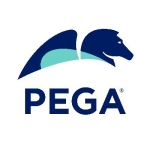What is our primary use case?
Control-M is a scheduling tool that I have been using for the last three years. Earlier I used Autosys as a primary scheduling tool. When I started
Control-M, it was a new experience because Autosys was over the cloud and we used to log in to the browser. Control-M is specifically for the application where we are using it now. The good thing is that there are so many connectors available.
Although I have one year of Autosys experience, Control-M presents a vast opportunity for us as a developer. Currently, I am in a data warehousing project where all the tools are legacy tools such as Informatica, SalesScript, Control-M, and database. When we are moving to the cloud, Control-M is still valid and relevant. We are transferring our data to the cloud and using Control-M as a scheduler. We are not using native cloud scheduler to date because all the developers here are accustomed to it.
We are almost using around 60 to 70% of the features. Control-M is providing us with so much capability to use during our daily problem-solving.
What is most valuable?
The good thing is that there are so many connectors available. Control-M provides lots of features, and we are almost using around 60 to 70% of them. Control-M is providing us with so much capability to use during our daily problem-solving.
What needs improvement?
When I joined this project and was very new to Control-M, there was one problem that even the seniors were facing sometimes. Suppose you are using Informatica; there are lots of Informatica developers in the market or some other tools that are very known to everyone. Even though Control-M is used by lots of people, the documentation in the beginning was very hard to search for on Google. This is why we had to reach out to people who were experienced, and it was a tough job for us because a few functionalities are not properly written in the documentation.
Another area of improvement is related to multiple versions of Control-M being used. In dev, one version exists, and in production, one version exists. In production, the stable version is used. Sometimes when we change over, there are multiple domains in Control-M such as Planning, Monitoring, History, and Forecast Tools. When we hop from one domain to another, sometimes we open a job, and the detail dialog box or detail window is not able to open.
Some features which are hidden are not properly documented in Control-M itself, or maybe documented but not properly given or described with examples. This is a problem. Sometimes we are forced to connect to senior developers who have used it for five to six years or more to learn about it.
For how long have I used the solution?
I have been using Control-M for the last three years.
What do I think about the stability of the solution?
There is no maintenance on my end. In the last three years, I have seen two upgrades that were done by the admin team. Control-M is using the new versions, and as a developer, I am using it.
What do I think about the scalability of the solution?
Control-M processes about 10,000 jobs starting every day in our production environment, and adding new jobs is very simple. We don't feel any pressure on Control-M because it is processing multiple jobs in parallel.
How are customer service and support?
Regarding contacting technical support about Control-M, we tried, but at that time, we didn't get any response. We reached out to our client head, described our problem, and received assistance.
As a developer, I created an account in the BMC community to get help support. We post there nearly because sometimes we need solutions very quickly, and we don't have time to connect with the guys in the Control-M help desk.
How would you rate customer service and support?
Which solution did I use previously and why did I switch?
Earlier I used Autosys as a primary scheduling tool. When I started Control-M, it was a new experience because Autosys was over the cloud.
How was the initial setup?
Regarding the initial installation and setup of Control-M, I still have not installed it. I need to connect with one of my friends who are working in the ops team, as I am in the developer team. We never install Control-M here in this project.
What about the implementation team?
I need to connect with one of my friends working in the ops team, as I am in the developer team. They have the access to install, uninstall, or configure anything.
What's my experience with pricing, setup cost, and licensing?
Regarding pricing, I cannot comment. As a developer, this is not in my hands, and it was decided by the client.
Which other solutions did I evaluate?
If Control-M is selling their product to new customers who have never used anything, then who will support the new customer? The customer may not have the senior engineer who has used Control-M earlier, so the documentation matters. Control-M can improve this in the way that others have; for example,
Databricks,
Google Cloud, and
Azure have so much documentation.
What other advice do I have?
Whatever we wanted, we have it. Control-M is not executing anything; it is just a scheduler. It schedules an Informatica job, and Informatica is running on its operating system, managing all the logs, and showing us that the job is completed. I have not seen any lagging. This can be answered by the ops team better because as a developer, I own a few applications, and when they start and end, my duty is done. Overall, I would give Control-M a rating of eight out of ten.
Which deployment model are you using for this solution?
On-premises
If public cloud, private cloud, or hybrid cloud, which cloud provider do you use?
Other
Disclosure: My company does not have a business relationship with this vendor other than being a customer.





















